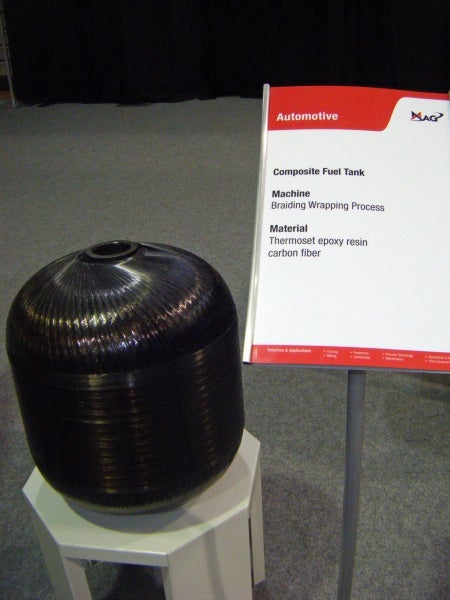Phila U. launches MAG Composites Institute
Less than a generation ago, Americans were bombarded with commercials that stated ‘Plastics make it possible.’ Now, signs are pointing to a future in composites, and Philadelphia University is playing a key role in the transition.
This week, the school officially launched its MAG Composites Institute at The Gallagher Athletic Center on campus. In attendance was Dr. Moshe “Mo” Meider, a Philadelphia University alum and member of the university’s Board of Trustees, along with University President Stephen Spinelli Jr., State Senator Vincent Hughes and Richard Curless, president of MAG Composite Technologies.
Established in 2011, The Philadelphia University’s MAG Composites Institute supports research and development of new fiber-based composites that could have broad applications in industry, including the aerospace, automotive and energy sectors. Dr. David Brookstein, executive dean for University Research, served as emcee for the event.
“We are pleased to formally introduce the Philadelphia University MAG Composites Institute to our colleagues in research, industry and academia,” said Spinelli. “Composite materials are critical to the development of new technologies that will make our lives better and more sustainable, and Philadelphia University is playing an important role in helping to fulfill that promise.”
As part of the initiative, Philadelphia University now offers a new B.S. in engineering program with a concentration in composites, one of the few such programs in the country. The first courses in composites have been offered this semester. The Institute is funded in part with $1.1 million from MAG, whose chairman and chief executive officer is Dr. Meidar.
On the ‘cutting edge’
The Institute builds on the University’s legacy as the nation’s first textile school and its expertise in advanced textile-related research. In 2009, Philadelphia University established the Biomedical Textile Structures Laboratory to develop textile-based products for medical use and in 2004 established the Laboratory for Engineering Human Protection to assist the military in designing and developing new protection systems for military personnel. MAG is the world’s leading developer of automation technologies for producing composite structures, as well as one of the largest global suppliers of machine tools and manufacturing automation systems for the durable goods industry.
“There is not one area where composites are not touching,” said Meidar. “This university will be a destination for anyone who wants to be on the cutting edge.”
The dedication ceremony also included a symposium with speakers from NASA, Bell Helicopter and General Motors. Composites have been a mainstay for a number of years and are now being used in wind energy and the automotive industry. According to Boeing, their lauded 787 Dreamliner will be made with 50 percent composites to reduce drag and weight. The Dreamliner will also require less maintenance. Since it also is lighter, it will use less fuel than its heavier counterparts.
J. Alex Freeman of Bell Helicopters showed in his presentation that in 1990 only five percent of Bell’s military products used composites in their manufacture. In 2011, 50 percent of their products are composed of composites.
‘Now the hard work begins’
“We as a nation need the work that’s going to be done at Philadelphia University,” U.S. Rep. Chaka Fattah said in videotaped remarks. “I know you’re going to help us build better industries and allow manufacturing using material that is lighter than aluminum and lighter than steel, using textiles in a way that long ago, when this university was founded, could not have been imagined.”
At the ceremony and symposium, there was an exhibition of products showing how composites are used in the real world. On display was an air intake for fighter aircraft and a fuselage for a small passenger aircraft. But to show how composites make a real difference was a comparisons exhibit in which attendees could lift the hood of a composite car hood and its metal contemporary. The difference in weight between the two was significant.
But the challenge for composites remains the cost for the material. Lowering the cost is the focus of future development for many industries. Composites have such unique properties because one is forming the alloy of the material as well as forming the shape of the material.
Nevertheless, Meidar has thrown down the gauntlet, again. First, it was getting the University to have an accredited engineering program, which it now has. Meidar has now challenged the university to have 30 graduates with a B.S. in Composite Engineering in the next five years.
“The ceremony is over,” said Brookstein. “Now, the hard work begins.”
WHYY is your source for fact-based, in-depth journalism and information. As a nonprofit organization, we rely on financial support from readers like you. Please give today.








